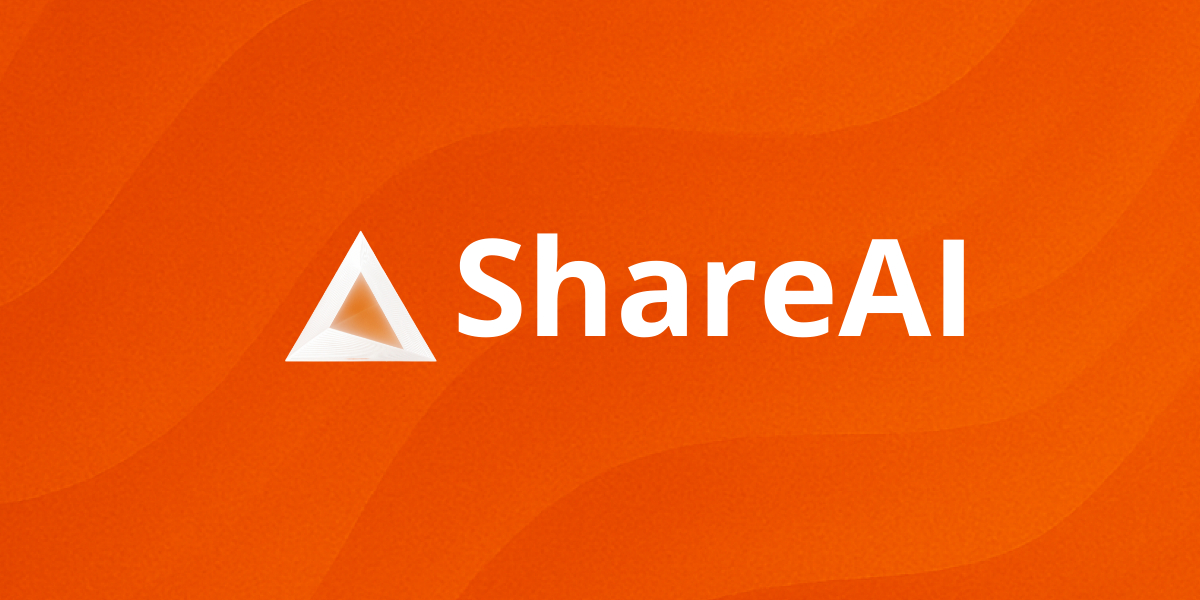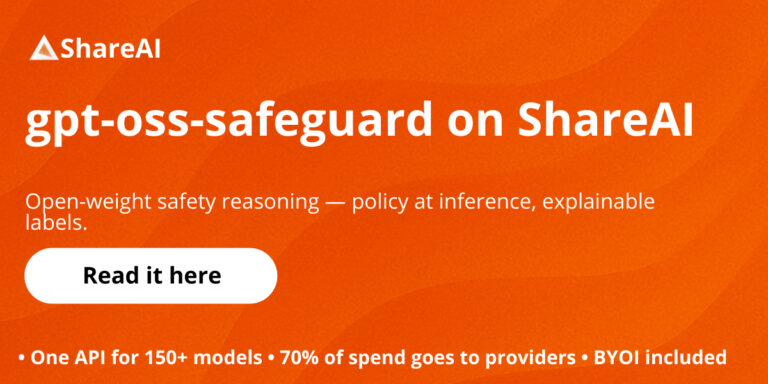How Can You Design the Perfect AI Backend Architecture for Your SaaS?

Designing the perfect AI backend architecture for your SaaS is about more than “calling a model.” It’s about building a robust, multi-model platform that can scale, route intelligently, and control latency and cost—without locking you into one vendor. This guide distills the core components you need, with practical tips for routing, observability, governance, and cost control—plus how ShareAI provides a purpose-built gateway and analytics layer so you can ship faster with confidence.
TL;DR: standardize on a unified API layer, add policy-driven model orchestration, run on scalable stateless infra, wire observability and budgets, and enforce security + data governance from day one.
Why Your SaaS Needs a Well-Designed AI Backend
Most teams start with a single-model prototype. As usage grows, you’ll face:
- Scaling inference as user volume bursts and spikes.
- Multi-provider needs for price, availability, and performance diversity.
- Cost visibility and guardrails across features, tenants, and environments.
- Flexibility to adopt new models/abilities (text, vision, audio, tools) without rewrites.
Without a strong AI backend, you risk bottlenecks, unpredictable bills, and limited insight into what’s working. A well-designed architecture keeps optionality high (no vendor lock-in), while giving you policy-based control over cost, latency, and reliability.
Core Components of an AI Backend Architecture
1) Unified API Layer
A single, normalized API for text, vision, audio, embeddings, and tools lets product teams ship features without caring which provider is behind the scenes.
What to implement
- A standard schema for inputs/outputs and streaming, plus consistent error handling.
- Model aliases (e.g.,
policy:cost-optimized) so features don’t hard-code vendor IDs. - Versioned prompt schemas to change models without changing business logic.
Resources
2) Model Orchestration
Orchestration chooses the right model for each request—automatically.
Must-haves
- Routing rules by cost, latency (p95), reliability, region/compliance, or feature SLOs.
- A/B testing and shadow traffic to compare models safely.
- Automatic fallback and rate-limit smoothing to preserve SLAs.
- Central model allowlists by plan/tier, and per-feature policies.
With ShareAI
- Use policy-driven routing (cheapest/fastest/reliable/compliant), instant failover, and rate-limit smoothing—no custom glue required.
- Inspect results in unified analytics.
3) Scalable Infrastructure
AI workloads fluctuate. Architect for elastic scale and resilience.
Patterns that work
- Stateless workers (serverless or containers) + queues for async jobs.
- Streaming for interactive UX; batch pipelines for bulk tasks.
- Caching (deterministic/semantic), batching, and prompt compression to cut cost/latency.
- RAG-friendly hooks (vector DB, tool/function calling, artifact storage).
4) Monitoring & Observability
You can’t optimize what you don’t measure. Track:
- p50/p95 latency, success/error rates, throttling.
- Token usage and $ per 1K tokens; cost per request and per feature/tenant/plan.
- Error taxonomies and provider health/downtime.
With ShareAI
- Get unified dashboards for usage, cost, and reliability.
- Tag traffic with
feature,tenant,plan,region, andmodelto quickly answer what’s expensive and what’s slow. - See Console metrics via the User Guide.
5) Cost Management & Optimization
AI costs can drift with usage and model changes. Bake in controls.
Controls
- Budgets, quotas, and alerts by tenant/feature/plan.
- Policy routing to keep interactive flows fast and batch workloads cheap.
- Forecasting unit economics; tracking gross margin by feature.
- Billing views to reconcile spend and prevent surprises.
With ShareAI
- Set budgets and caps, receive alerts, and reconcile costs in Billing & Invoices.
- Choose models by price/perf in Models.
6) Security & Data Governance
Shipping AI responsibly requires strong guardrails.
Essentials
- Key management & RBAC (rotate centrally; plan/tenant scopes; BYO keys).
- PII handling (redaction/tokenization), encryption in-flight/at-rest.
- Regional routing (EU/US), log retention policies, audit trails.
With ShareAI
- Create/rotate keys in Create API Key.
- Enforce region-aware routing and configure scopes per tenant/plan.
Reference Architectures (at a glance)
- Interactive Copilot: Client → App API → ShareAI Gateway (policy: latency-optimized) → Providers → SSE stream → Logs/metrics.
- Batch/RAG Pipeline: Scheduler → Queue → Workers → ShareAI (policy: cost-optimized) → Vector DB/Providers → Callback/Webhook → Metrics.
- Enterprise Multi-Tenant: Tenant-scoped keys, plan-scoped policies, budgets/alerts, regional routing, central audit logs.
Implementation Checklist (Production-Ready)
- Routing policies defined per feature; fallbacks tested.
- Quotas/budgets configured; alerts wired to on-call and billing.
- Observability tags standardized; dashboards live for p95, success rate, $/1K tokens.
- Secrets centralized; regional routing + retention set for compliance.
- Rollout via A/B + shadow traffic; evals to detect regressions.
- Docs & runbooks updated; incident and change-management ready.
Quick Start (Code)
JavaScript (fetch)
/**
* Docs:
* https://shareai.now/docs/api/using-the-api/getting-started-with-shareai-api/?utm_source=blog&utm_medium=content&utm_campaign=ai-backend-architecture-saas
*
* Playground:
* https://console.shareai.now/chat/?utm_source=shareai.now&utm_medium=content&utm_campaign=ai-backend-architecture-saas
*/
const SHAREAI_API_KEY = process.env.SHAREAI_API_KEY;
async function draftEmail(topic) {
const res = await fetch("https://api.shareai.now/v1/chat/completions", {
method: "POST",
headers: {
"Authorization": `Bearer ${SHAREAI_API_KEY}`,
"Content-Type": "application/json",
},
body: JSON.stringify({
model: "policy:latency-optimized",
messages: [
{
role: "user",
content: `Write a short email about: ${topic}`,
},
],
stream: true,
}),
});
if (!res.ok) {
throw new Error(`HTTP ${res.status}`);
}
// Handle streaming in production; simplified here:
return await res.json();
}Python (requests)
"""
Docs:
https://shareai.now/docs/api/using-the-api/getting-started-with-shareai-api/?utm_source=blog&utm_medium=content&utm_campaign=ai-backend-architecture-saas
"""
import os
import requests
API_KEY = os.environ["SHAREAI_API_KEY"]
URL = "https://api.shareai.now/v1/chat/completions"
payload = {
"model": "policy:cost-optimized",
"messages": [
{
"role": "user",
"content": "Summarize this incident report in 5 bullets."
}
],
"stream": False
}
resp = requests.post(
URL,
json=payload,
headers={"Authorization": f"Bearer {API_KEY}"},
timeout=60
)
resp.raise_for_status()
print(resp.json())Auth (Sign in / Sign up) • Create API Key • Try in Playground • Releases
How ShareAI Helps You Build a Scalable AI Backend
ShareAI is a model-aware gateway and analytics layer with one API to 150+ models, policy-driven routing, instant failover, and unified cost monitoring.
- Unified API & routing: choose cheapest/fastest/reliable/compliant per feature or tenant.
- Usage & cost analytics: attribute spend to feature / user / tenant / plan; track $ per 1K tokens.
- Spend controls: budgets, quotas, and alerts at every level.
- Key management & RBAC: plan/tenant scopes and rotation.
- Resilience: rate-limit smoothing, retries, circuit breakers, and failover to protect SLOs.
Build confidently—start in the Docs, test in the Playground, and keep up with Releases.
FAQ: AI Backend Architecture for SaaS (Long-Tail)
What is an AI backend architecture for SaaS? A production-grade, multi-model backend with a unified API, model orchestration, scalable infra, observability, cost controls, and governance.
LLM gateway vs API gateway vs reverse proxy—what’s the difference? API gateways handle transport; LLM gateways add model-aware routing, token/cost telemetry, and semantic fallback across providers.
How do I orchestrate models and auto-fallback? Define policies (cheapest, fastest, reliable, compliant). Use health checks, backoff, and circuit breakers to reroute automatically.
How do I monitor p95 latency and success rates across providers? Tag every request and inspect p50/p95, success/error, and throttling in unified dashboards (see User Guide).
How do I control AI costs? Set budgets/quotas/alerts per tenant/feature/plan, route batch to cost-optimized models, and measure $ per 1K tokens in Billing.
Do I need RAG and a vector DB on day one? Not always. Start with a clean unified API + policies; add RAG when retrieval quality materially improves outcomes.
Can I mix open-source and proprietary LLMs? Yes—keep prompts and schemas stable, and swap models via aliases/policies for price/performance wins.
How do I migrate from a single-provider SDK? Abstract prompts, replace SDK calls with the unified API, and map provider-specific params to standardized fields. Validate with A/B + shadow traffic.
What metrics matter in prod? p95 latency, success rate, throttling, $ per 1K tokens, and cost per request—all sliced by feature/tenant/plan/region.
Conclusion
The perfect AI backend architecture for your SaaS is unified, orchestrated, observable, economical, and governed. Centralize access through a model-aware layer, let policies pick the right model per request, instrument everything, and enforce budgets and compliance from the start.
ShareAI gives you that foundation—one API to 150+ models, policy routing, instant failover, and unified analytics—so you can scale confidently without sacrificing reliability or margins. Want a quick architecture review? Book a ShareAI Team Meeting.

